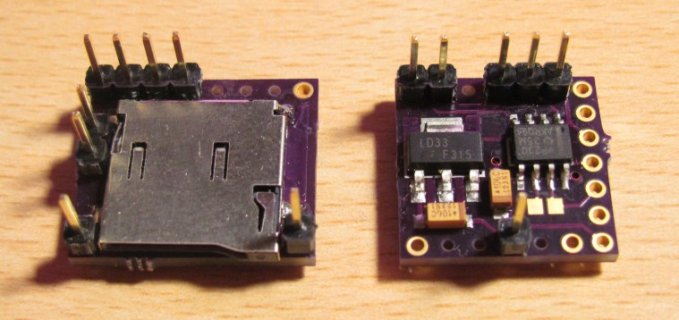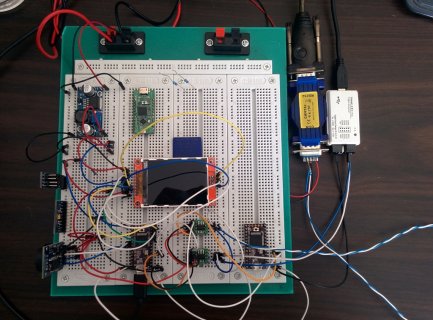PaulStoffregen
Well-known member
Looks interesting. Any thoughts about putting a 3 position terminal block on the board, maybe up on the top side?
Hi, I've made a shield for CAN bus and power supply. It (should) have the same dimensions as the Audio Adapter.
Please review and tell me if you're interested.

Hi, I've made a shield for CAN bus and power supply. It (should) have the same dimensions as the Audio Adapter.
Please review and tell me if you're interested.
I don't know exactly what you mean. What would be connected there?PaulStoffregen said:Looks interesting. Any thoughts about putting a 3 position terminal block on the board, maybe up on the top side?
The PCB can be ordered directly at 123d.circuits.io as soon as I mark is as "done". The 100 ohms resistor was my fault, will change it.dpharris said:I am interested in a CAN shield ... where might I get some of these? One concern with Manuel's is that his termination is 100 ohms, rather than the usual 120 ohms. Also, an isolated solution might be good. But, thanks to both of you for designing some solutions!
I want to power a USB device from the regulator. That's why I took a "big one". But the same regulator (same footprint) is also available as 3.3V version, so it's just a matter of assembly.Just a thought - how about using the 3.3V regulator (and 3.3V transciever) to not stress the Teensy's internal regulator?
I want to power a USB device from the regulator. That's why I took a "big one".
But the same regulator (same footprint) is also available as 3.3V version, so it's just a matter of assembly.
The PCB can be ordered directly at 123d.circuits.io as soon as I mark is as "done".

Can chance the library could get a "listen only" example that just prints info to the Arduino Serial Monitor for everything it hears on the bus?
BTW: I'm planning to put FlexCAN in the Teensyduino 1.20 installer. Is the Teachop's copy on Github the best to use?
void CAN_Send(){
msg.id = 0x631;
//msg.header.rtr = 0;
msg.len = 8;
msg.buf[0] = 0x40;
msg.buf[1] = 0x05;
msg.buf[2] = 0x30;
msg.buf[3] = 0xFF;
msg.buf[4] = 0x00;
msg.buf[5] = 0x40;
msg.buf[6] = 0x00;
msg.buf[7] = 0x00;
CANbus.write(msg);
delay(1000);
}Nice.
Here is one I've made some time ago (on the photo together with the MicroSD shield)
View attachment 2874
I'm very interested in both your shields, can they be used toghether wilth the audio shield ?
Can you sell them populated with components, i suck at soldering smd !
If someone wanted to make a sell these, would the "not for commercial use" mean they'd need to start from scratch?
Can anyone confirm if this would be the correct way to format a message?
Code:void CAN_Send(){ msg.id = 0x631; //msg.header.rtr = 0; msg.len = 8; msg.buf[0] = 0x40; msg.buf[1] = 0x05; msg.buf[2] = 0x30; msg.buf[3] = 0xFF; msg.buf[4] = 0x00; msg.buf[5] = 0x40; msg.buf[6] = 0x00; msg.buf[7] = 0x00; CANbus.write(msg); delay(1000); }
It checks out fine in the IDE.
I do not do them anymore. You can make the All-In-One shiled yourself if you want.
https://oshpark.com/shared_projects/VeJFD9qA
No idea if they can be used with Audio shield, never used one.
